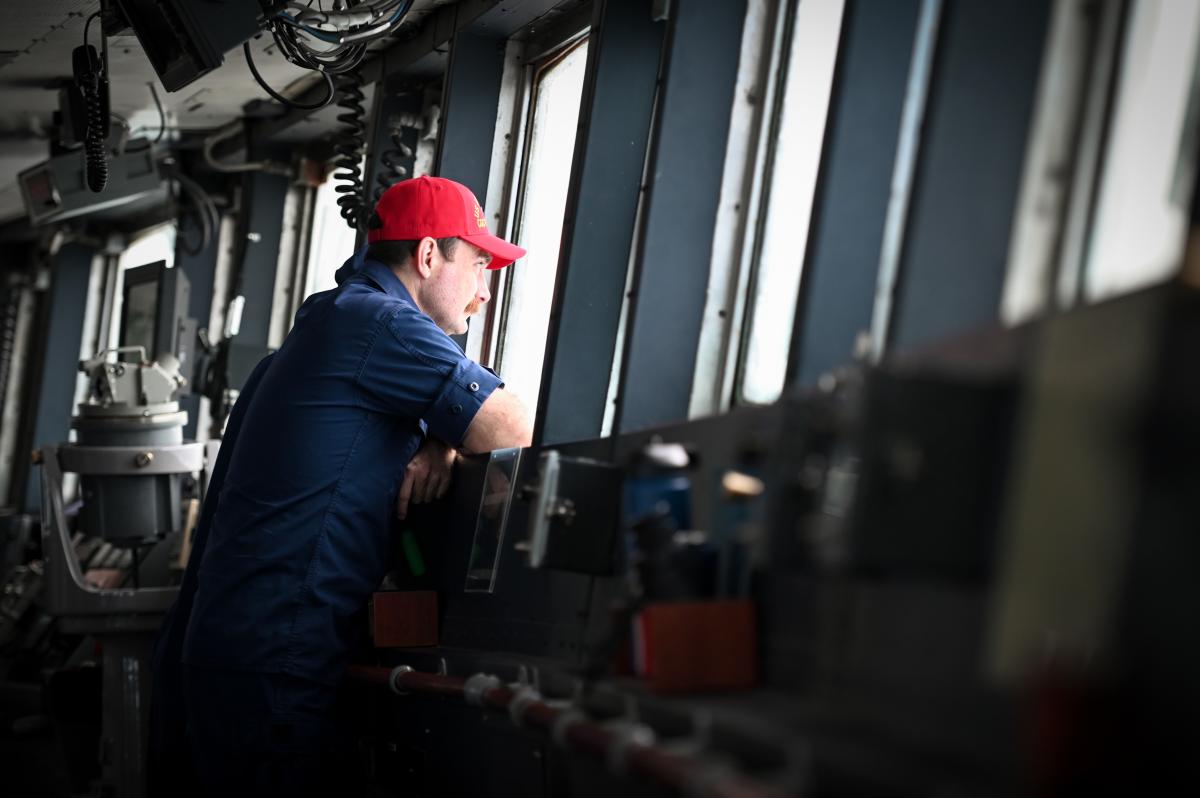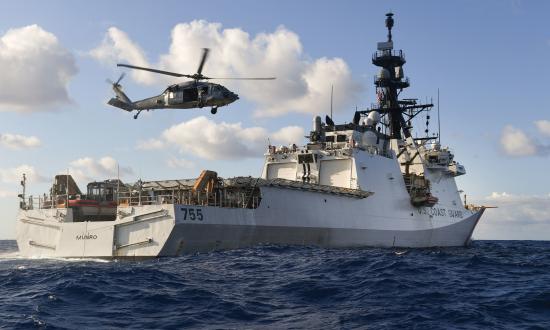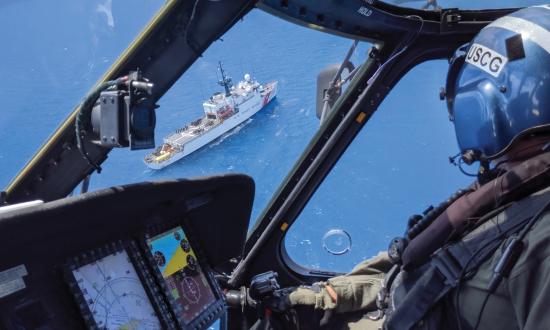Nearly six years have passed since then–Lieutenant Commander Brian Smicklas presaged “The Demise of the Cutterman.”1 Viewed by many at the time as a doom-and-gloom prediction, a hypothetical situation in extremis, Smicklas’s projected reckoning is coming to pass. The Coast Guard does not have enough cuttermen volunteering for assignment to send its fleet to sea. Without dramatic, immediate action, it will have to select-and-direct cuttermen to serve afloat in six months’ time.
The current lessening of standards signals a death spiral of underqualified officers afloat compared with today’s force; swift action in the spirit of Smicklas’ clarion call is critical to make sea duty attractive. In the absence of leadership, incentive, and robust support for seagoing officers, the Coast Guard will end up with a less capable fleet unable to meet future challenges.
Coming Home to Roost
Smicklas noted the rising tide of the Coast Guard’s role in protecting the United States’ maritime domain and the increase in offerings and career paths, including shore assignments. He predicted how new opportunities would sap the cutter community, luring away talented officers while offering promotion and success with a better quality of life. Indeed, the flood of officers shunning afloat operations flows unabated, as many of the service’s most promising leaders transition away from a career that includes experience at sea.
With assignment trending toward specialization, officers find it increasingly difficult to straddle a dual-track career containing afloat assignments. Once it was commonplace for officers to alternate between afloat and a support specialty, but those individuals are now the exception. Afloat experience is not mentioned in current guidance to officer selection boards and panels. In fact, the overarching guidance is specific in demanding a “proven track record on delivering results, extending beyond just operational performance.”2
The Coast Guard is a maritime force in service of a maritime nation. The National Security Strategy, the triservice Advantage at Sea,and top leaders acknowledge that protecting U.S. interests begins and ends in the maritime domain.3 As Coast Guard Commandant Admiral Karl Schultz notes, “America’s security, prosperity, and national interests are inextricably linked to the maritime domain, and the demand for Coast Guard services has never been greater.”4 Cutters are the key to mission success at sea. Without attracting, grooming, and maintaining the best talent in the cutter community, the current definition of mission success will fade into an aspiration.
An “Unattractive” Career Afloat
Many Coast Guard leaders recognize the importance of stanching the flow of talented officers away from careers at sea, while also attempting to reinvigorate the community. With all specialties experiencing upward mobility, many are reaping the benefits of shoreside quality of life that Smicklas highlights. The crushing operational demands of serving in the cutter fleet become less and less attractive in comparison.
The Coast Guard has initiated a push to increase the “attractiveness of sea duty.” It has commissioned working groups, hosted discussion panels, and encouraged traditional honors and ceremonies. The Office of Cutter Forces implemented an increase in sea-pay rates to “retain a mission ready workforce.”5 In an unprecedented move in a culture in which officers do not normally receive bonuses, the service began offering a $40,000 bonus for most of those going to sea at the lieutenant and lieutenant commander level.6 Program managers hoped to attract talent back to the community.
Yet, even the motivator of additional compensation did not bear fruit. Facing a critical shortage of volunteer officers for sea-duty assignment in 2021, the Coast Guard expanded the bonus to any officer with a deck watch officer qualification, having previously required at least 36 months afloat.7 Program managers wait with bated breath in hopes more aspiring cuttermen will come out of the woodwork.
Now, scrambling to staff cutters with barely qualified applicants in a bodies-to-billets mismatch, the service has potentially doomed the cutter community. As the standards decrease for assigning officers afloat, one natural implication is a decrease in leadership and performance standards. In quick succession, that will translate into a decrease in promotability and a decrease in others wanting to follow a similar path. Although cuttermen currently appear to promote at a higher rate than other specialties, promotion rates are a lagging indicator that may not accurately reflect what will happen to today’s force.8 If Smicklas’s predictions continue to hold, and the service does not take immediate action, it is reasonable to expect a decline in promotability when those underqualified officers taking assignment today meet best qualified boards in five years’ time.
The afloat community has a rich history of those seeking afloat careers who are highly motivated, having succeeded in robust training programs and challenging leadership billets. In the current environment, the service will be forced to order individuals lacking many of those traditional experiences to assignments. Units and operational commanders will bear the cost in readiness and effectiveness.
A Chance to Reverse the Damage
The Coast Guard will ensure that the needs of service are met, but the fallout will be dire. It is possible, however, to retain talent without taking from other communities: “expanding the pie” instead of “dividing the pie.” A two-pronged approach of providing intrinsic and extrinsic motivation might work. Deckplate leaders and senior leaders must work in concert to ensure sea duty attracts the talent necessary to sustain mission excellence.
Prong 1: Cutter Command Cadre
Those in cutter command positions must reassess talent management, recognizing the special qualities of going to sea. A focus on tradition, leadership opportunities, and a sense of camaraderie that comes only with a true “wardroom” is just the beginning. Deckplate-level leaders must instill a sense of pride and accomplishment in their junior officers, recognizing their hard work and sacrifice relative to their peers.
Commanding officers need to spend extra time studying various career specialties, in an effort to provide sound career advice. If junior officers do not foresee a viable, rewarding, and fulfilling career at sea, they will choose another path. It is the hope that junior officers will find the intrinsic motivation through their interactions with afloat leaders to continue to seek the challenge of sea duty.
Prong 2: Senior Service Leaders
For service leaders with enterprise-wide tools, it is time to wield them. The prospect of sending underqualified officers into the Coast Guard’s most dangerous, sensitive, and impactful positions of leadership at sea should cause alarm. The service must reevaluate how it encourages officers to serve at sea.
Many report that they do not wish to go to sea because of a perceived lack of career “reward” relative to career “risk.” While not all experiences are comparable, it is clear that leadership experience afloat is more robust, more challenging, and more risky than similar experiences ashore. Smicklas commented on junior officers’ risk assessment, determining (accurately) that a career ashore carries less risk, with most of the same career benefits. To alter this perception, the service must prioritize leadership experience at sea. By recognizing the importance of seagoing leadership to officer development, the service can begin to appropriately incentivize and manage perceptions.
Senior leaders must continue to encourage all of those around them to go to sea. Without highly qualified and talented officers leading the cutter fleet, the Coast Guard’s mission to promote a global system of maritime governance will be hampered.
The Time to Strike Is Now
While other communities also have the right to attract and retain top talent, the Coast Guard must work to strike a better balance. Ashore operations at the cost of afloat operations is not a sustainable force-management model.
The service realizes its challenge, highlighted by a recent all hands message on “sea-duty readiness.”9 It sees the right path, recognizing the importance of parity in sea pay, “rebalancing in-port maintenance [unit]-level workloads,” and providing “dedicated time periods for crew readiness.”10 Still, without swift implementation, these herculean efforts by sea-service champions will miss the time to strike. The crisis is now.
With the recently established Sea-Duty Readiness Council, informed by outside studies and analyses, many see a glimmer of hope for positive evolution. It remains to be seen, however, how effective the council may be in gathering support for its initiatives.
The Coast Guard is an adaptive, responsive organization whose culture lends itself to swift action in the face of crisis. Make no mistake, the staffing crisis facing cutters is more dangerous than any hurricane, terrorist attack, or drug smuggling cartel. Without encouraging and placing the best quality members at the “tip of the spear,” mission execution will suffer. The time to act is now, both to solve the immediate need through innovative and powerful incentives, and also to grow the attractiveness of sea duty to prevent another talent collapse.
1. LCDR Brian Smicklas, USCG, “The Demise of the Cutterman,” U.S. Naval Institute Proceedings 141, no. 8 (August 2015).
2. Commandant’s Guidance to PY21 Officer Selection Boards and Panels.
3. Advantage at Sea: Prevailing with Integrated All-Domain Naval Power (December 2020); and Paul McLeary, “CJCS Milley Predicts DoD Budget ‘Bloodletting’ to Fund Navy,” Breaking Defense, 3 December 2020.
4. Commandant’s Guidance to PY21 Officer Selection Boards and Panels.
5. U.S. Coast Guard, ALCOAST Commandant’s Notice 105/20: “Sep 2020 FY21 Workforce Planning Team Results—Afloat Officer Interventions,” September 2020.
6. U.S. Coast Guard, “FY21 Workforce Planning Team Results—Afloat Officer Interventions.”
7. U.S. Coast Guard, ALCOAST Commandant’s Notice 146/20: “Dec 2020 FY21 Workforce Planning Team Results—Afloat Officer Interventions, Update One," 14 December 2020.
8. Office of Cutter Forces, “Afloat Officer Corps SITREP: Analysis & Survey,” 20 February 2020.
9. U.S. Coast Guard, ALCOAST 016/21, “Jan 2021: Sea-Duty Readiness,” 13 January 2021.
10. U.S. Coast Guard, “Jan 2021: Sea-Duty Readiness.”






